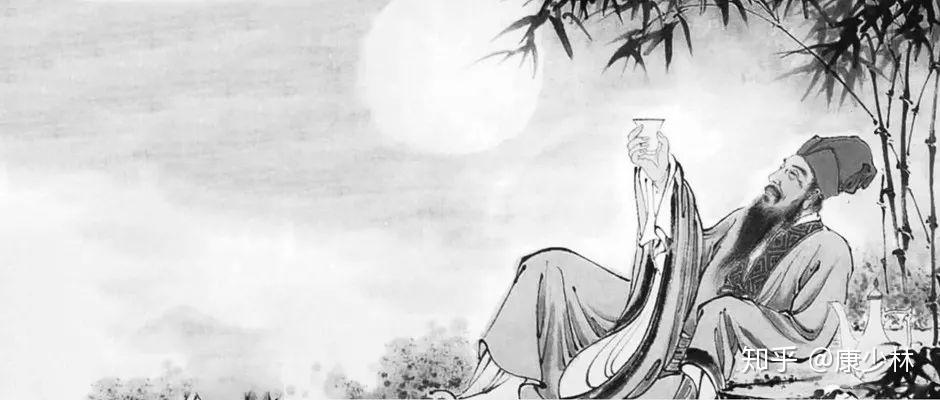The biggest oversight in popular machine learning architectures? No telepathy. Meanwhile, biological systems have been leveraging it as a key learning enabler forever.

“Abbe Faria: Here is your final lesson - do not commit the crime for which you now serve the sentence. God said, Vengeance is mine. Edmond Dantes: I don't believe in God. Abbe Faria: It doesn't matter. He believes in you.” ― Alexandre Dumas, The Count of Monte Cristo, V1
The Real ADHD Issue Lies with Schooling, Not with Students - Parents should consider a change of environment, not an Rx.

"What is now proved was once only imagined." - William Blake
Listening All Night to the Rain: Selected Poems of Su Dongpo (Su Shi)
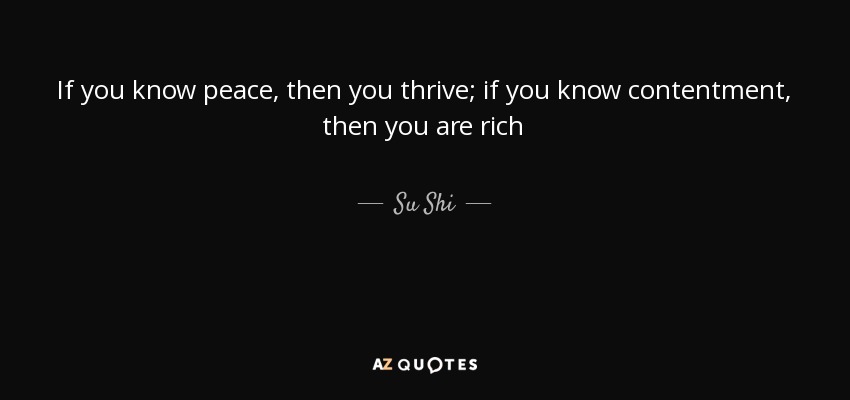
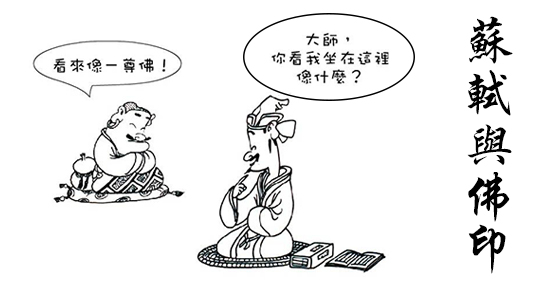
Original Lyric Poem Calming Wind and Wave (定風波):-
莫聽穿林打葉聲, 何妨吟嘯且徐行;
竹杖芒鞋輕勝馬, 誰怕? 一蓑煙雨任平生;
料峭春風吹酒醒, 微冷, 山頭斜照卻相迎;
回首向來蕭瑟處,歸去, 也無風雨也無晴。
Stop listening to the rain pattering on leaves,
Why not enjoy a stroll, and sing your heart out?
Giving up the horse for sandals and a cane – who would mind?
A straw cloak may be all I need in misty rain.
The spring breeze wakes me up from drowsiness – a bit chilly.
The setting sun warms me though with embracing rays.
Turning back, still mindful of that cold and wretched place.
Now that I have arrived – home at last,
Nothing stirs me any more, the glaring sun, the wind or the rain.
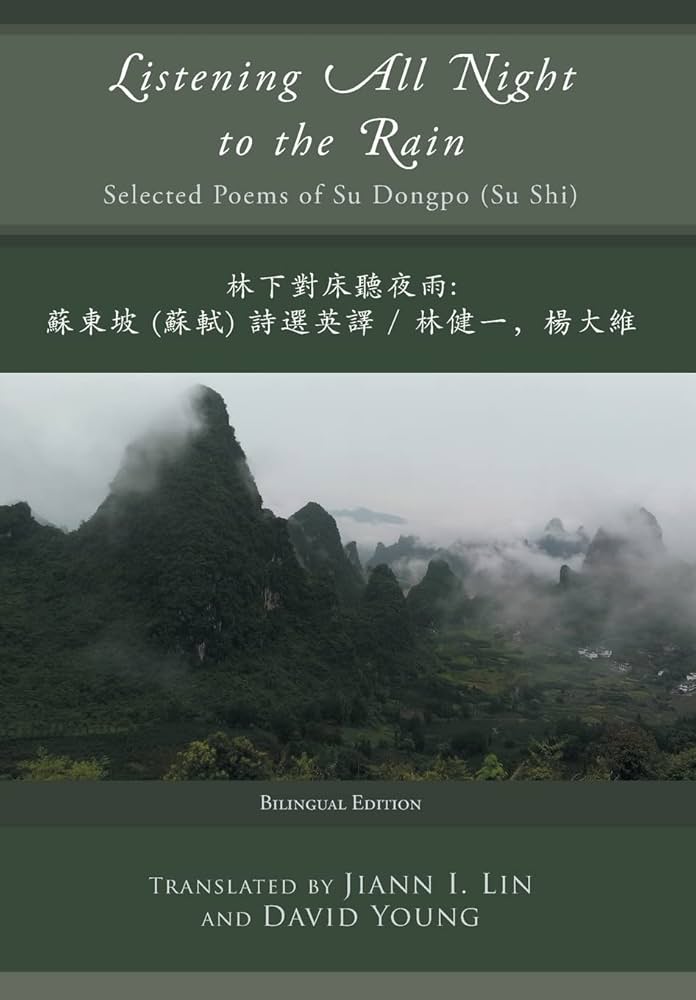
Su Shi (苏轼), also known as Su Dongpo (苏东坡), lived from 8th January 1037 to 24th August 1101. He was a prominent figure in the Song Dynasty (960-1279 CE) as well as a poet, calligrapher, writer, painter, gastronome, pharmacologist, and statesman. His father Su Xun (苏洵) gave him the name Shi (轼) after an ornate armrest usually fixed on the front section of Chinese carriages, as a reminder to the boy to pay heed to how he appeared in public.
Likewise, his father named his brother Su Zhe (苏辙) after wheel tracks left by carriages, to imply that the boy should leave a good impression on others and in his life. Apart from his given name, Su Shi was also known by his courtesy name Zizhan (子瞻), meaning “little forward-looking one”, and his pen-name Dongpo Jushi (东坡居士), meaning “east slope householder”. However, he is most commonly referred to as Su Dongpo.
As a statesman, Su Shi was a significant political figure in the Song Dynasty. He was associated with historian and politician Sima Guang (司馬光), and went against the New Policy Party led by Wang Anshi (王安石), a notable Chinese economist, statesman, chancellor and poet. Known for his expressive style, Su Shi’s writings provided clarity of understanding for Song Dynasty topics such as travel and the iron industry. Both his father and brother were also famous scholars.
In addition, Su Shi’s poetry enjoyed a long period of popularity and influence in China, Japan, and other nearby countries, as well as in English-speaking parts of the world through translations by Arthur Waley and others. In the field of Chinese arts, Su Shi is often thought to be “the leading personage of the 11th century”, and had a famous Hangzhou dish named in his honour, Dongpo pork.
Master plan of Quiet Garden. Sequel to Annals of Tianjin County (1870)
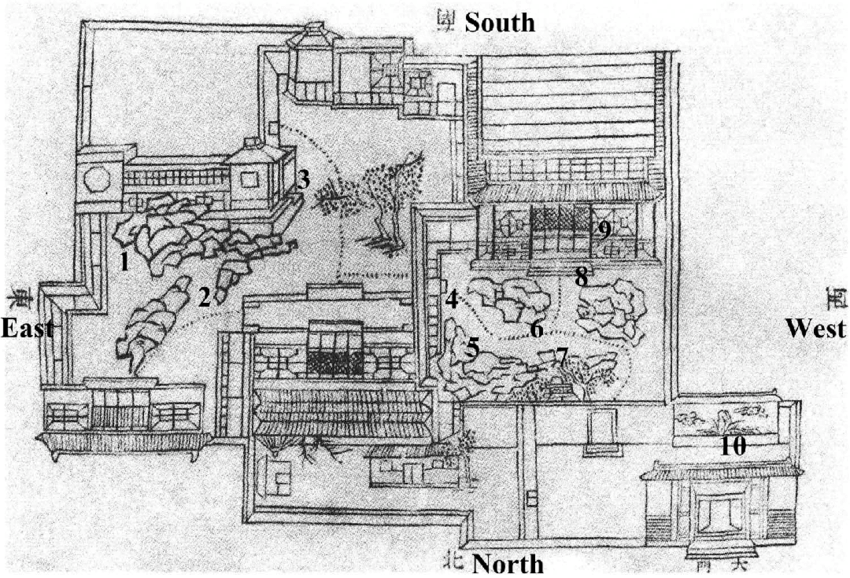
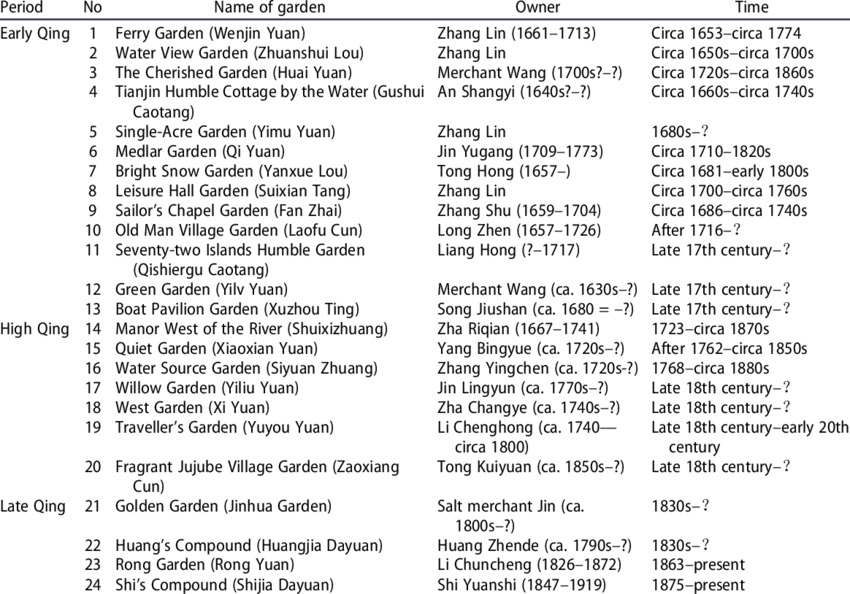
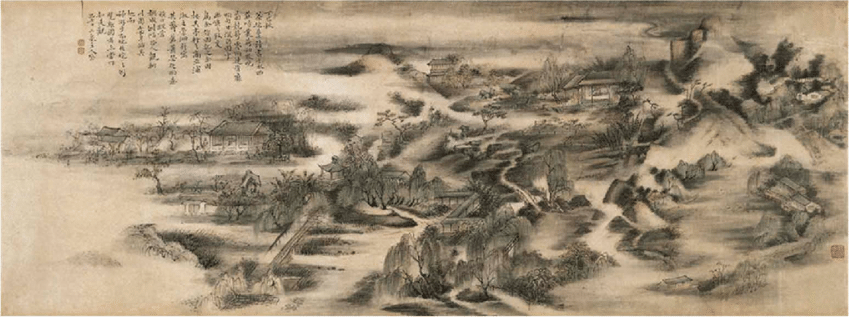
The Retreat and Reflection Garden - or The Garden of Quiet Meditation
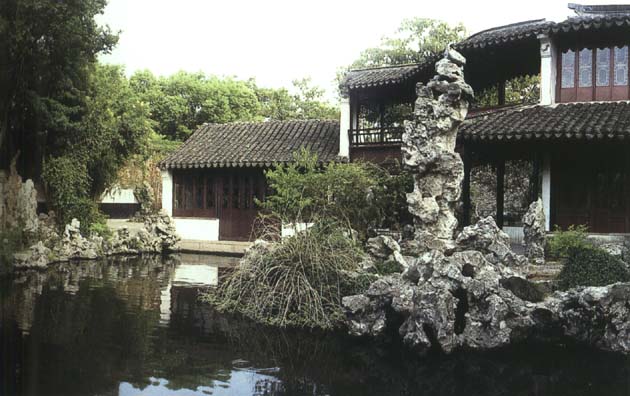
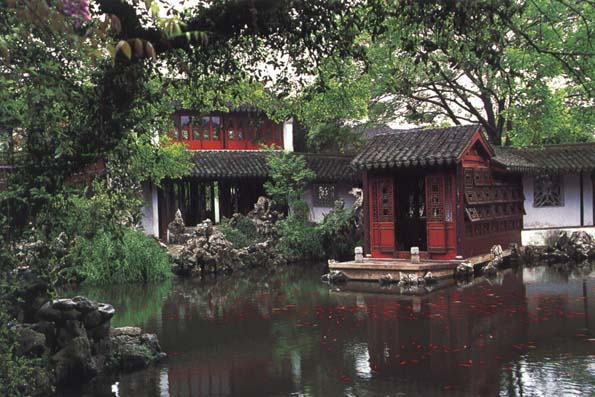
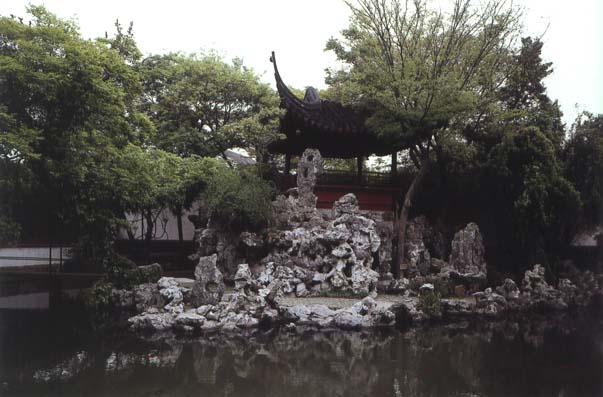
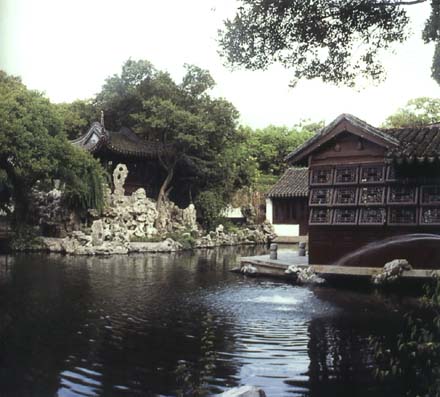
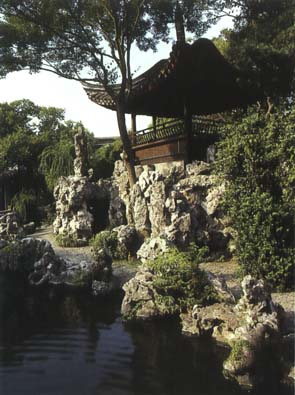
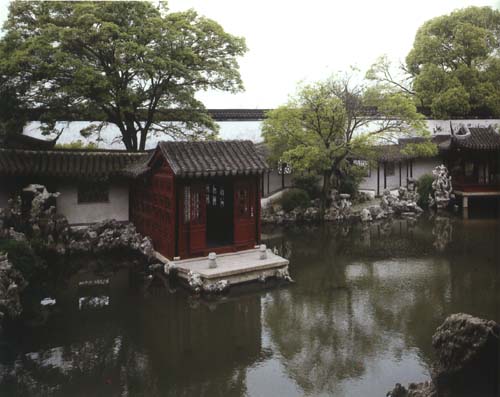
Source: Suzhou Gardens, China Architecture & Building Press
This garden is located in the old town of Tongli, in Jiangnan water county. The garden's views are simple, but elegant. One of these views is called Tieshui Garden. The Garden of Quiet Meditation's layout follows the topography; it reaches beyond the ordinary. From west to east it is arranged horizontally, with residence on the left, a courtyard in the middle, and garden on the right; the garden's views are thus entered one by one, finally arriving at the superlative scenery.
The Garden of Quiet Meditation was built in the 11th to 13th year of Qing dynasty's Guangxu period (1885-1887 A.D.). The garden owner's name was Ren Lansheng. He had also been dismissed from office, and in order to remedy for his wrongdoings he gave the garden its name. The garden designer's name was Yuan Long; he was well versed in poetry, literature, calligraphy and painting. Following the characterstics of water county he designed it carefully, and then spent two years to build it. The garden occupies a little less than 0.65 hectare, and combines many different garden construction methods; and is a specimen of excellence.
Water forms the central point of the Garden of Quiet Meditation, with buildings and rockeries arranged along the water's edge; buildings are erected close to the water surface, emphasizing the vastness of the water area. Thus it is also called Tieshui Garden. Special for the Garden of Quiet Meditation is that water and buildings are very close; as if the garden floats on water. Compared to other gardens, this gives the feeling of motion.
The Retreat and Reflection Garden
Source: www.szgarden.com.cn/en/garden/tsy/tsy.htm
The Retreat and Reflection Garden is composed of the housing complex, garden courts and a garden which are aligned on a west-east axis.
The housing complex consists of inner and outer houses. The outer house has a succession of three halls. The inner house to the east is made up of two two-storied buildings in the shape of "U", reached by two stairways on two sides.
The spacious garden court is the transitional area between the housing complex and the garden. There's a boat-like pavilion near the entrance for the reception of guests, a form of architecture typical in the Venetian region of Tongli.
The garden to the east is the cream of the property. Small and exquisite buildings,built close to the pond, are in admirable proportion to water scapes and landscape. The thatched Hall of Retreat and Reflection, a main structure of the garden, was constructed on the moon-viewing terrace, from which one is able to feast his eyes on surrounding scenes. Carefully arranged and well-spaced buildings around the pond include the Lotus Blooms Pavilion, the Stone Boat, the Hardship Terrace, the Zizania Rain Brings Coolness Pavilion, and the Celetial Bridge which is, in fact, a rare double-gallery in the south of the Lower Yangtze. To the southwest of the garden is the Osmanthus Fragrans Lour Hall in a peaceful and enclosed mini-garden within the garden. At the northwest corner is the Gathering Beauty Pavilion that overlooks the entire garden. The pavilion, connected with the Lasting Spring and Moon Viewing Tower in the middle part, borrows scenes from the garden and vice versa, an excellent example of garden scenes in the south of the Lower Yangtze.
In short, the Retreat and Reflection garden is full of changing vistas. There are gardens within the garden, principal and subordinate scenes. Space, including water space, has been ingeniously handled to suggest more space. Endless scenes have been created within limits. It serves as a fine example of how the few surpassing the many.
The Retreat and Reflection Garden possesses 24 buildings, 28 tablets and plateaux, 12 steles, and 15 valuable old trees such as magnolia denudata Desr., celtis sinensis Pers, etc.
Quiet Is More than Words - By Lu Shirong
The practice of Health Qigong is inseparable from the quiet, and the “three regulations” also need the quiet. People can talk about the quiet freely in the non-practicing status, but all language activities will disappear or fade when entering into the meditation state. At this point, practitioners will feel pleasant and wonderful, caused by the integration of the body, mind and breathing, which is the meaning of “Quiet Is More than Words” talking about in this article.
First of all, the “quiet”, which usually talked about, is the review of the pleasant experience in the meditation after the practice. As we all know, the meditation state of the practice is beyond description, which is a character of quiet. The quiet described in the words is not the original ecology. In terms of general practitioners, the cognition of quiet is mostly from the oral transmission of teacher before participating in the practice and the cognition of quiet also needs to be found with the guide of the predecessors after participating in the practice. While entering into the meditation state, the cognition of quiet is beyond description, or the mentality in the meditation state has disappeared without a trace before opening the mouth. Thus, the quiet expressed by language has been away from its nature and converted to the quiet in the language environment, which can be expressed as fleeting or brief stopover or enduring caused by penetrating into all aspects of daily life. Therefore, practitioners still miss the wonderful quiet after leaving the meditation state. So they try to find some words to praise that kind of quiet. For example, quiet is a basic condition of Health Qigong, quiet is an essential kind of temperament of practitioners, and quiet is an accomplishment of practitioners. All these are the reviews and aftertastes of the meditation state. That is true. Quiet is the key factor to observe all things, so as to practice in high spirits. Most people cannot feel the taste of quiet, because of being capricious and busy. Unquiet mind leads to ineffective ideal condition. The so-called meditation refers to the quiet mind rather than the quiet physical condition, and the physical condition is never quiet. In this sense, the integration of three regulations in the practice of Health Qigong is to pursue the quiet of the body, mind and breathing, achieving the state of quiet and emptiness and observing all things with that kind of mentality. Then all things will exhibit the natural charm, and the exercisers can focus on the most subtle place, or even the infinity vast universe, caring deeply about all tings. As Su Shi said, “To make wonderful poem, poet must keep quiet and empty, so as to take in all things”, which is a kind of pleasant experience of meditation.
Secondly, the survival conditions for human language have gone in the meditation state, which is the essence of “Quiet Is More than Words”. Language is a tool for thinking and communication, closely linking with thinking, which is the carrier of thinking, substances housing and pattern of manifestation. Language is a symbolic system, which is a system combining with voice, semantic, vocabulary and grammar organization law.
On the one hand, after entering the language system, people have to express their mind through speaking or writing. Precisely at this link, "talking and writing” are contrary to “forgetting everything” required by the meditation. In that case, exercisers must only choose one of the two. So, to choose meditation, the language must be given up. The pattern of “Quiet Is More than Words” is formed. The Chinese character “Jing ( Quiet)” is composed by two characters, namely “Qing (blue)” and “Zheng (scramble)”. How to scramble the blue? Raise head to see the blue sky, which is the original quiet. How wonderful it is! On the other hand, from the beginning, conversion and implementation stage of meditation and formation of language, we can find that the formation of language is completely opposite to the direction of meditation. In the initial stage, language is used to express thoughts according to the purposes, while the meditation is to eliminate distractions. In the conversion stage, convert the thoughts into the form of language conform to the syntactic rules, while the meditation is to achieve the state of the integration of three regulations. In the implementation stage, the language is used to speak or write the contents in their own forms, while the meditation is to be tranquil and nothingness. In short, there are insurmountable barrier between the meditation and language, the mutual exclusiveness makes the view of “Quiet Is More than Words” sensible, reasonable and logical. Of course, exercisers may not be able to enter the meditation state without words, which is not in the scope of this paper.
“To make wonderful poem, poet must keep quiet and empty, so as to take in all things” - Su Shi (苏轼) (1037 – 1101)
